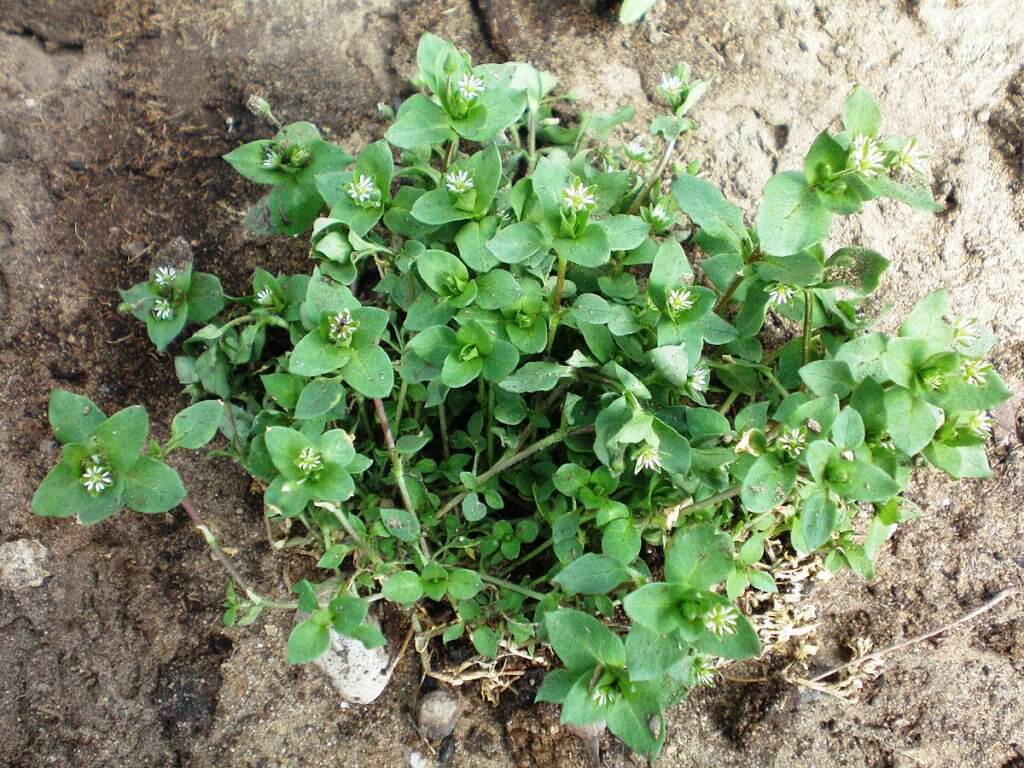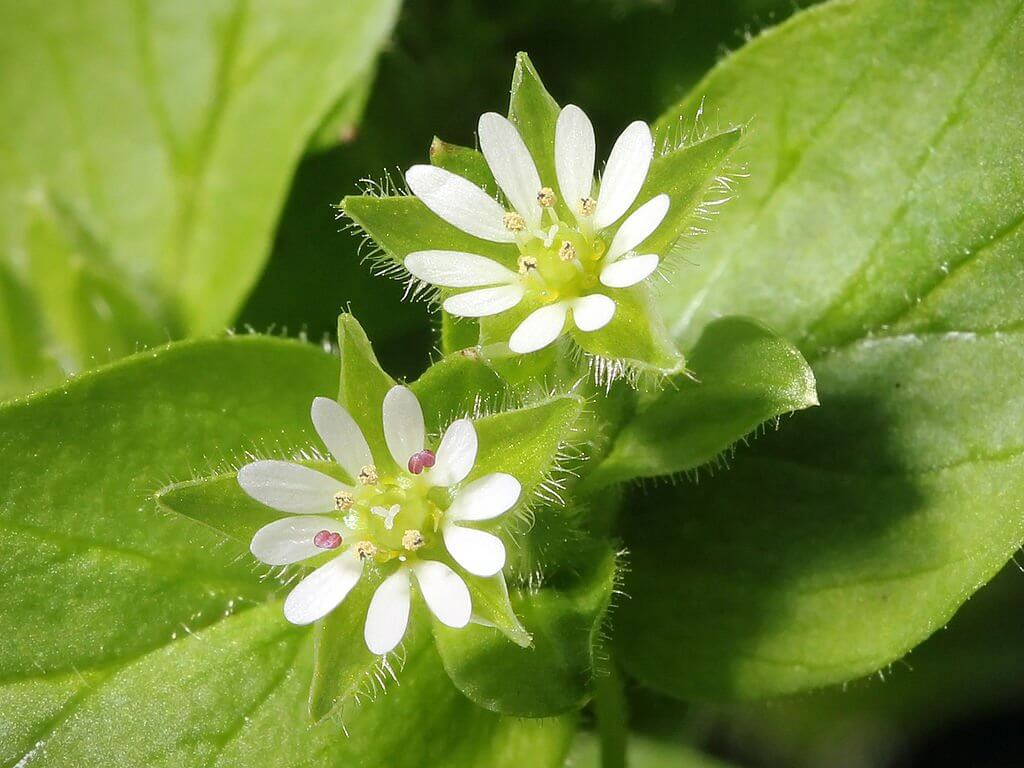
Chickweed is a common winter annual plant that grows all over Asia, Europe, and North America. The name chickweed itself actually doesn’t only apply to one particular plant. There are two species under the name this name, Stellaria media and Cerastium fontanum. The former is considered as the true chickweed while the latter is more commonly known as mouse-ear chickweed.
Both plants are indistinguishable from each other; both have slender hairy stems with egg-shaped leaves and delicate, white, star-shaped flowers. These plants are commonly found in meadows and sunny open areas. In North America, chickweed is often considered as a common lawn weed. But, despite its reputation, chickweed is actually a nutritious wild edible.
Edibility and culinary use
Even though Americans see chickweed as a garden weed, other cultures don’t see it that way. In Asia, for example, chickweed is a valuable and important edible. In fact, it’s one of the symbolic herbs consumed in a Japanese spring-time festival called Nanakusa-no-sekku, or the Festival of Seven Herbs.

(Source: AfroBrazilian/Wikimedia Commons)
Chickweed leaves can be eaten raw or cooked. They have a slightly sweet, neutral taste, almost like spinach or lettuce. For that reason, this versatile edible can be used in many different dishes. The easiest ways to consume these leaves are to toss them into a bowl of salad or to add them into sandwiches. However, you can also find a plethora of other recipes, from sauces like pesto to chickweed pie.
Health benefits
Chickweed is full of vitamins A, B1, B2, and C as well as fiber and protein. Due to its nutritional contents and numerous medicinal properties, this cold-weather herb has been used in folk medicine for hundreds of years. It can treat many different conditions, such as constipation, bowel problems, iron-deficiency anemia, asthma, bronchitis, joint pains, and blood disorders. It can also aid weight loss by making you feel fuller for longer.
You can also apply the herb directly onto the skin to treat itchiness, bruises, boils, ulcers, and psoriasis. To do this, you can either bruise the leaves or steep the stems in hot water before applying them directly onto the affected areas.
Cultivation
Instead of weeding it, you can actually make chickweed a part of your garden. Aside from being a source of nutritious and delicious greens, it also has many other uses. This plant can act as a beautiful ground cover that will appear lush all year long. This plant also makes your garden more fertile by releasing phosphorus, manganese, and potassium into the soil. And in springtime, its small white flowers can attract pollinators, especially small birds to your garden.

(Source: Kaldari/Wikimedia Commons)
Chickweed is very easy to cultivate. It can grow in almost every soil condition, though it prefers fertile, moist soil with full sun exposure. On fertile soil, this plant will look wonderful as a ground cover. You can still make it grow nicely on infertile soil but expect a less lush appearance and fewer blooms in springtime.
Since this plant is gaining attention and popularity as a garden plant, you might be able to purchase young starter plants or seeds from local plant nurseries. Otherwise, you can always turn to the internet to find some chickweed seeds. Sow the seeds indoors in spring in a cold frame, they should germinate within a couple of weeks. Once they’re large enough to handle, plant them into their permanent positions in your garden by summertime. They will start blooming by the next spring.
Cautions
Chickweed is safe to consume in moderation. However, note that the leaves from Stellaria media contain saponins, which are toxic to the human body. But don’t worry, saponins are poorly absorbed by the human body, so it wouldn’t cause harm in small doses. Saponins can also be broken down by thorough cooking.
Due to the lack of information on the subject, it’s advisable for pregnant and breastfeeding women to avoid consuming chickweed. Lastly, don’t forget to consult your doctor before including this wild edible into your daily diet.
Conclusion
It turns out that weeds can be quite useful in the kitchen, including chickweed. This plant isn’t only edible, but it’s also nutrient-dense and useful for treating many different ailments. If you find any chickweed growing in your garden, don’t be so quick to weed them out. Instead, harvest them for a delicious and healthy meal. Then, go a step further and cultivate them in your garden.
---------------
Writen by Cornelia Tjandra
Cornelia is a freelance writer with a passion for bringing words to life and sharing useful information with the world. Her educational background in natural science and social issues has given her a broad base to approach various topics with ease. Learn more about her writing services on Upwork.com or contact her directly by email at cornelia.tjandra@gmail.com
Many of our readers find that subscribing to Eat The Planet is the best way to make sure they don't miss any of our valuable information about wild edibles.
See our privacy policy for more information about ads on this site






